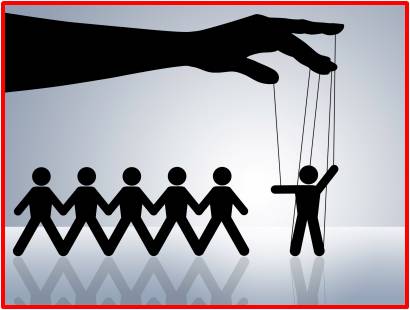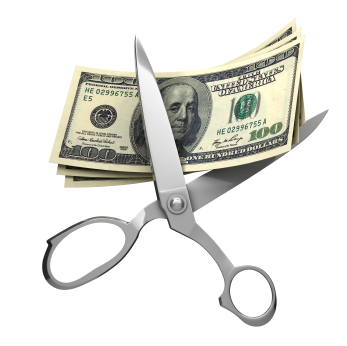16 Jul 2013
Is There a Better Way to Find More Customers?
 Snagging more customers doesn’t have to be tedious, expensive and stressful. Amen, right? So, let’s break it down. When you’re hungry, which would you prefer: (1) to run to the fridge and grab a tasty snack; or (2) grab your fishing pole, and head out back to catch your next meal?
Snagging more customers doesn’t have to be tedious, expensive and stressful. Amen, right? So, let’s break it down. When you’re hungry, which would you prefer: (1) to run to the fridge and grab a tasty snack; or (2) grab your fishing pole, and head out back to catch your next meal?
Obviously, most entrepreneurs would favour the fridge. Why is that? Simply put, it’s all about convenience. In today’s modern world of technology, we all live for “the now.” From our smartphones to our iPads, we can chat, shop, message, and search with ease.
Ultimately, it’s time to give ‘cold calling’ (the messy, expensive and hard way to do business) the boot, and adopt an easier, more cost-effective way of captivating, engaging and attracting more customers and qualified leads online. So, let’s take a quick look at eight simple ways you can find more leads and more customers for your business online:
SEO
The creative art of Search Engine Optimization (SEO) involves integrating keywords and phrases into your webpages, making them easier to locate for your potential clients who are combing the web right now, looking for products/services to cure their #1 source of pain. It is essential to weave keywords into your web content strategically (without overusing or “keyword stuffing”), in order to optimize your search engine hits and traffic. Google is currently making updates (known as Penguin and Panda) to their search algorithms, to ensure that the websites that rank the highest, contain the most relevant and valuable content to readers.
Advertising
Reaching more customers is the ultimate goal of advertising. You want to get as much bang for your buck as possible, so research and highly targeted pitches are crucial. It is more important to intimately know your consumer base than it is to stress about which channels to market your message through. The worst thing you can do is try to appeal to everyone – for you will effectively reach no one. In fact, 99% of the people who currently see your ads right now, don’t respond. If you want more customers, you must first create a message that captivates and inspires your ideal prospect.
Webinars
A webinar can be viewed by thousands of potential customers simultaneously from different locations in real-time and it can be recorded and shared/sold at a later date on your website. This is a great low-risk and low-cost way to share valuable information with your prospects and consumers and build your database up very quickly.
Pay Per Click Ads
Pay per click advertisements are a skilful way to snap up more customers as they search Google (and other portals) for solutions to their pressing problems. These advertisements are easy to spot as they often appear in shaded boxes at the top of search engine results or in display ad slots on high traffic sites, portals, forums and blogs. Using pay per click ads allows you to strategically route targeted traffic direct to a landing page that is designed to convert more customers (who find you) to take up your offer. Since you have to pay for each click on your ad, care must be taken to ensure that your landing page converts a large percentage of the traffic. Bear in mind, that statistics show the average eCommerce site converts only 2.2-4.0% of its pay-per-click traffic.
Blogging and Content Marketing
Blogging and content marketing are both great avenues to deliver insightful and up-to-date information to your prospects and targets via the internet. Blogging is the perfect vehicle to keep visitors coming back on a regular basis and it helps boost your search engine rankings – Google and other search engines give preferential treatment to websites that update their content on a regular basis and have strong social following. It also allows you to post valuable content on other sites, social media platforms and customer forums which can help more customers learn about you, make an informed decision and build backlinks that bring even more traffic to your site.
Mobile Optimization
We live in a technologically mobile world, so it’s time to ensure that your company’s website is “mobile-friendly,” too. In the last 2 years there has literally been an explosion of mobile searches and purchases from smartphones and tablets. It is estimated that nearly 35% of all web traffic originates from a mobile device which means it is imperative that you have a user-friendly mobile version of your web content. Not only will you be rewarded with increased website traffic and retention, you will also reap more enquiries and more customers who pay for your solution.
Social Media
Connecting with prospects and customers through various social media platforms is a skilful way to cultivate interest while also creating an open 2-way channel of communication with existing customers. Choose a social network that best suits your business model. Whether it’s Facebook, Twitter, Linkedin or Pinterest, posting up-to-date and informative content is sure to boost your brand awareness, feedback, following and…ultimately sales.
PR
Public relations is the ultimately the steering wheel of your informational boat. Your PR department must eloquently regulate the ebb and flow of company content that is passed along to your targeted consumers. It is imperative to keep your public relations positive, current, and professional, utilizing as many different resourceful tools as possible. The likes, shares and comments also allow your posts and website to rank favourably with the major search engines – which is another great reason to start attracting more customers via PR.
Finding more customers online doesn’t have to be messy, expensive or difficult. Take your pick from these eight great methods to create your own practical and powerful strategy to find more customers online and avoid the nasty trap of feeling that you have to cold call to find more customers and sales.
 No doubt you have heard of the seven cardinal sins of the Christian religion – wrath, greed, sloth, pride, lust, envy and gluttony? But did you know that there are also seven lethal sins of selling? And they’re deadly because they’re toxic to your business and your bank account.
No doubt you have heard of the seven cardinal sins of the Christian religion – wrath, greed, sloth, pride, lust, envy and gluttony? But did you know that there are also seven lethal sins of selling? And they’re deadly because they’re toxic to your business and your bank account.
Unfortunately, if you commit even one of them, you’ll find that your sales leads will shrivel up and die right before your eyes…
If you want to capture the attention of more prospects and increase sales, you need to stop committing all of these deadly sins.
Are you guilty of:
- A lame approach or introduction?
- Wasting your prospect’s time with stuff that is important to you but not to them?
- Failing to identify and understand your customer’s pain?
- Forgetting to give your audience a clear message why they should choose you?
- Selling products, features or benefits instead of solutions to their pain?
- Neglecting to prove beyond a shadow of a doubt that you can cure their pain?
- Making it easy for them to talk themselves of out of the sale? or
- Giving too many options (or not asking for the sale)?
Thankfully, there is a cure to help you increase sales and it is a whole lot simpler than you might imagine. Which is lucky for you – because right now, you are killing leads and losing sales with each sin that you commit.
Everyone knows that a solid, consistent stream of prospects and sales are vital to the health and success of your business. And right now, you are spending a lot of money each month on activities and communications where 99% of your audience chooses not to buy from you. It’s a lot of money to waste on sales presentations, calls and emails that aren’t working, isn’t it?
Now depending on which deadly sins you are committing (one, two or all seven of them), many of your prospects have gone to one of your competitors to get their pain cured. I would like to show you exactly where you went wrong and what you need to do to fix your message and increase sales. I want to show you how to turn your message into one that your audience is dying to say “YES” to.
- Keep the Lights on – Often presenters switch off the lights in a room so that the slides can be read more easily. Besides encouraging the decision making part of your prospect’s brain to fall asleep, this fatal move also diverts attention to the screen – when you need to do to increase sales is have your audience focus their attention on the conversation you are having with them.
- Capture attention upfront – In order to stand out and be remembered, you need to open with a question, story, myth-busting statement, or picture that is relevant to your audience. The best way to increase sales is to show them you understand (and can solve) their #1 source of pain.
- Stop wasting time on you - Never waste your time telling potential customers about you. 100% of your message should focus on your prospect or customer, and how your solution will cure her pain, keep her safe, or make her life better. If you message is relevant and your customer is engaged, it will increase sales.
- A picture is worth 1000 words – Your brain is hardwired to process visual cues and act before you have time to think things through carefully. If you want to connect with your audience and increase sales, you need to present fewer words, graphs and statistics and start showing them in pictures how their life will be better with your solution.
- Simplify your message – Most slides have far too many words on them to be persuasive. Less is more – if your audience is too busy reading, they cannot possibly engage with you and your key message. The brain can only process and memorize 3 or 4 key points at a time. If your message is more complex than that, it simply will not be remembered.
- Use stories to communicate your key points – messages that cause your customers to reconnect with or rediscover strong emotions from their past and associate those with your solution, are 10x more likely to trigger the part of the brain that decides.
- Crank up the contrast – In order to trigger a decision quickly and increase sales, you must stand out. Your customer needs to feel the difference between your solution, your competitor’s solution, doing it themselves, or doing nothing.
By mastering these 7 steps, you are now ready to go back to the beginning, rework what you say and how you say it in order to influence a speedy decision in your favour and increase sales. These 7 steps will help you to STOP falling prey to the 7 deadly sins of selling that we talked about earlier. They are going to help you increase the effectiveness of your message and also reduce the amount of time and money that you need to spend chasing leads and sales.
When you make it easier for your audience to see and grasp your message, he/she is more likely to decide and will on some level appreciate the fact that you have not wasted his time and energy with stuff that wasn’t important to him.
 I’ve got a major challenge for you…
I’ve got a major challenge for you…
I want you to assess what you are currently spending on marketing – brochures, website, pay per click campaigns, PR, newspaper, direct mail, social media etc. – and I want you to slash the total budget by 20%.
No matter what you are selling and where you are selling it, I guarantee that you won’t miss the 20% you just saved and put back in your bank account. And there is a very good reason for that…
98% of the people who see your message either don’t remember it or are not compelled to take action. You are spending thousands of dollars each year on sales and marketing campaigns and the vast majority of the people who see your message don’t really “get” your message – so they can’t possibly recall it or buy from you.
So with the money you just saved, I’m going to show you how to increase your sales. To do that, I want you to take a few minutes right now to re-engineer your message from the ground up and give yourself a better chance of achieving cut through, retention and action with your ideal target audience. Thankfully, it won’t cost you much to take the time right now to create a message that increases your sales (by helping more of your prospects to say “yes”). And if more of your qualified leads say “yes”, the money you do have left to spend in your sales and marketing budget is going to produce a much better return.
To prove my point, I’d like to make you an interesting offer…
What if I were to give you either $50 cash right now or a piece of paper where I will write the net present value of a five year annuity on $10 at a compound annual interest rate of 10%, adjusted for CPI?
Which of these offers sounds more appealing and valuable to you? Which would you rather take right now? Or said another way, which of these can you take now, put in your wallet or spend it at the shopping centre?
Unless you are one of those very rare individuals who can calculate in your head the value of my second offer, I’m willing to bet you’d rather just take the $50. And that makes a whole lot of sense, because everyone knows what $50 is worth. There’s nothing confusing about it, is there?
The part of your brain that makes decisions is not interested in working hard to figure out what my message means and what it’s worth. That part of your brain is looking for something that is tangible and relevant.
And if you’re unsure about whether a message is tangible or not – ask yourself this simple question “would a 6 year old understand it?”
Think about it – if I offer you a $50 note, an orange or a book, you don’t have to think very hard to decipher the value or usefulness of what I am offering you, do you? All of these items are equally easy to understand. As soon as you see them, you know what they are and you know exactly what you can do with them, don’t you? $50 will buy you enough food to cook a meal, the orange is good for you and a book is something that you can read. There are no directions or heavy thinking required to make sense of what I am offering you. Your new brain doesn’t have to do any thinking (and wasting time) to get my message.
So what does this mean for you, your message and your customers?
If you are making it hard for your prospects and customers to understand what you do and whether they are getting a good deal, you need to spend some time right now making your offer more tangible. Ask yourself “does my message include a bunch of big words, fluff and jargon?” Could it be boiled down to something simple that even a 6 year old could understand? What do you need to do today to re-work and re-communicate it more clearly so that your prospects will be able to say “yes”? Can you simplify the words that you use or introduce photos or props to get your message across more quickly and clearly?
Producing a simple, succinct message is a lot harder than being lazy and throwing together an ad full of useless, complicated jargon and information. A good rule of thumb here is to remember that you should work harder to craft and simplify your message than your prospect has to in order to decipher it. Someone has to do the hard work – either you can do it before you put it out there or your audience will be forced to do it which means they may get stuck thinking about it instead of deciding.
Now if you are serious about saving money and you would like to increase your sales, you won’t spend another collar until you review your materials and do whatever it takes to make your message more tangible. You don’t have to spend more money to chase leads and increase your sales. What you really need to do is take the complication and confusion out of your message so that more of your prospects can say “yes” now.
 For those of you who are in the retail industry, you may have noticed a recent trend to clean up in-store environments – reduce shelf heights, remove dense ends and dump bins, widen aisles etc. – in order to increase comfort and make the shopping experience less stressful for customers.
For those of you who are in the retail industry, you may have noticed a recent trend to clean up in-store environments – reduce shelf heights, remove dense ends and dump bins, widen aisles etc. – in order to increase comfort and make the shopping experience less stressful for customers.
The big question then becomes “does clean make customers keen”? According to Walmart, arguably the largest and most successful retailer in the world, clean stores mean fewer beans (on the bottom line).
As reported in the New York Times, Walmart conducted a massive in-store experiment to improve sight-lines, rationalize the overall number of items offered, remove warehouse-like merchandising in centre aisles, and increase the width of core aisles. According to Walmart’s CEO William S. Simon, “(Customers) loved the experience. They just bought less.”
As a result, Walmart reverted back to its original strategy of offering more products, with tighter aisles, more clutter and lots of bargain bins in the hopes that customers would spend more because of a perception “there were bargains to be had”.
If you do a quick search on the internet, there are dozens of experts who subscribe to the view that a larger selection, more bargain bins, and sales signage equates to “better value”. In essence, the more you look like a market stall, the better it is to generate buzz and sales. They argue that if your merchandise is neatly presented on the walls and in well organized aisles, with no point of sale impulse offers and dense ends full of 2-for-1 specials, customers will tend to think your store is expensive (i.e. overpriced) and they will not buy from you.
And if you think about it, you can probably name a whole list of retailers who subscribe to this “clutter is good for business” philosophy and they seem to be successful. But how can we be sure that clutter makes customers keen? Have we been too quick and prematurely jumped to a conclusion that clean is a traffic and transaction turn-off?
Recent empirical evidence from neuroscience and neuromarketing sheds new light on how we think, and more importantly, how we make decisions. In fact, the decision making part of your brain responds strongly to certain stimuli only.
Did you know that your brain consumes 25% of your body’s energy? As a result, you brain wants to conserve energy so you tend to pay attention and be attracted to things that have sharp contrast, high visual appeal, strong emotional cues and a clear beginning vs. end message.
Now what does this mean for you in the context of your shopping environment?
A chaotic, cluttered store is cumbersome for your brain to navigate – you have to work hard mentally to hunt down and search for bargains. It may create some emotional appeal but it is likely perceived as having low contrast, low visual appeal and no clear beginning vs. end. According to neuromarketing studies, shopping in this environment takes time and energy and it also forces your brain to go into “thinking” mode. This is a critical point because thinking is counter-productive to deciding. Thinking takes place in one part of your brain (the neo-cortex), while deciding happens much more quickly (and automatically) in your old or “reptilian” brain.
So what does this neuromarketing research mean for the strategy and conclusions reached by Walmart?
Based on neuroscience, the strongest buying cue that you can give your customers is this – if your store (or business) has incredible bargains, people will buy (and even sift through a maze of clutter) because something is in it for them. The “what’s in it for me” (WIFM) principle is one of the strongest influences on the part of your brain that decides.
However, there is no hard evidence to suggest that clutter makes your customers keen.
Walmart and many others have come to a conclusion based on what they THINK people are doing to reach a buying decision in-store. However, neuromarketing has produced empirical evidence to support the opposite conclusion is more probable. Clutter and chaos create an environment where your customers have to think too hard, which is exhausting for the brain. They will do it if they have to, as long as the perceived bargains and value are very high.
Wouldn’t it make more sense to find another way to communicate good value and service without exhausting your customers and causing them to waste their time?
Wouldn’t you be more likely to get more sales and word of mouth referrals from your delighted customers?
In the end, Walmart may be correct about the fact people buy more in certain circumstances but they are wrong about WHY that is. The best way to create more excitement and sales is to make it easier for your customers to decide. You need to show them what’s in it for them, increase the contrast between your solution and your competitors and communicate a strong, clean visual message that compels them to say “YES”.
Today, I’ve got a major challenge for you. I want you to take a look at what you are currently spending on marketing – whether it’s on brochures, your website, pay per clicks, PR, newspaper, direct mail, social media etc. – and I want you to slash the total budget by 20%. No matter what you are selling and where you are selling it, I guarantee that you won’t miss that 20%. And there is a very good reason for that. 96% of the people who see your message right now, don’t get it anyway. You are spending thousands of dollars each year on sales and marketing materials to increase your sales and the vast majority of your prospects don’t understand your message – so they can’t possibly recall it and buy from you.
So with the money you just saved in your pocket, we are going to take a few minutes right now to re-engineer your message and give you a much better chance of getting through and being understood. The good news is this – it is not going to cost you much to take the time right now to create a message that helps more of your prospects to say “yes”. And if more leads say “yes”, the money you do spend on sales and marketing is going to increase your sales.
To prove my point, I’d like to make you an interesting offer – I can either give you $50 cash right now or a piece of paper where I will write the net present value of a five year annuity at a compound annual interest rate of 10%, adjusted for CPI. Which of these sounds more appealing to you? Which would you rather take right now? Which of these can you take now, put in your wallet or spend it at the shopping centre?
Unless you are one of those very rare individuals who can calculate in your head the value of my second offer, I’m willing to bet you’d rather just take the $50. And that makes a whole lot of sense, because everyone knows what $50 is and what it is worth. There’s nothing confusing about it, is there?
The part of your brain that makes decisions is not interested in working hard to figure out what my message means and what it’s worth. That part of your brain is looking for something that is tangible. And if you’re unsure about whether a message is tangible or not – ask yourself “would a 6 year old understand it?”
Think about it – if I offer you a $50 note or an orange, you don’t have to think very hard about it to figure out what I am offering you, do you? Both of them are equally easy to understand. As soon as you see it, you know what it is and you know exactly what you can do with it. $50 will buy you enough food to cook a meal and the orange is good for you – it’s tasty and you can eat it. There are no directions and no heavy thinking required to make sense of what I am offering you. Your new brain doesn’t have to do any thinking (and wasting time) to get my message.
So what does this mean for you, your message and your customers? If you are making it hard for your customers to understand what you do and whether they are getting a good deal, you need to spend some time right now making your offer more tangible. Ask yourself “does my message include a bunch of big words, fluff and jargon?” Could it be boiled down to something that a 6 year old could understand? What do you need to do to communicate it more clearly to increase your sales – t0 help your prospects to be able to say “yes”? Can you simplify the words that you use or introduce photos or props to get your message across faster?
Now, I think you can guess that coming up with a simple, succinct message is a lot harder than being lazy and throwing together an ad full of useless, complicated information. A good rule of thumb here is to remember that you should be working harder to craft and simplify your message than your prospect has to in order to decipher it. Someone has to do the hard work – either you are committed to doing it before hand or your customer will need to think about it.
Now if you are serious about saving money and you want to increase your sales, you won’t spend another cent until you stop, take a good hard look at your materials and do whatever it takes to make your message tangible. You don’t have to spend more money to chase find customers. What you really need to do is take the complication and confusion out of your message so that more of your prospects can say “yes” now.












